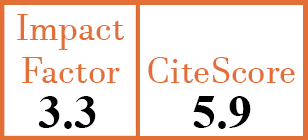Full Papers
Treatment outcomes in 63 cases of juvenile dermatomyositis-associated calcinosis
B.Y. Yi1, D.M. Wahezi2, L. Covert3, K. Ardalan4, J. Hui-Yuen5, N. Vasquez-Canizares6, D.M. Mosa7, M. Jones8, C. Correll9, A. Begezda10, S. Shenoi11, E.Y. Wu12, L.K. Kovalick13, W.B. Lapin14, S.E. Tarvin15, M.S. Oliver16, M.M. Rodriguez17, I. Marmor18, K.W. Baszis19, A.J. Taxter20, A.C. Hanson21, C.S. Crowson22, A.B. Orandi23
- Department of Paediatrics, The Johns Hopkins University School of Medicine, Baltimore, MD, USA.
- Paediatric Rheumatology, The Children’s Hospital at Montefiore, Bronx, New York, USA.
- Paediatric Rheumatology, Duke Health, Durham, NC, USA.
- Paediatric Rheumatology, Duke Health, Durham, NC, USA.
- Paediatric Rheumatology, Cohen Children’s Medical Center, New Hyde Park, New York, USA.
- Paediatric Rheumatology, The Children’s Hospital at Montefiore, Bronx, New York, USA.
- Rheumatology and Rehabilitation, Mansoura University Hospital, Mansoura City, Egypt.
- Department of Dermatology, Keck School of Medicine at USC, Los Angeles, CA, USA.
- Division of Paediatric Rheumatology, University of Minnesota Medical School, Minneapolis, MN, USA.
- Paediatric Rheumatology, Penn State Milton S. Hershey Medical Center, Hershey, PA, USA.
- Rheumatology, Seattle Children’s Hospital, Seattle, WA, USA.
- Paediatric Rheumatology, UNC School of Medicine, The University of North Carolina at Chapel Hill, Chapel Hill, NC, USA.
- Paediatric Rheumatology, UNC School of Medicine, The University of North Carolina at Chapel Hill, Chapel Hill, NC, USA.
- Rheumatology, Connecticut Children’s, Hartford, CT, USA.
- Paediatric Rheumatology, Riley Children’s Health, Indianapolis, IN, USA.
- Paediatric Rheumatology, Riley Children’s Health, Indianapolis, IN, USA.
- Paediatric Rheumatology, Riley Children’s Health, Indianapolis, IN, USA.
- Department of Paediatrics, Dana-Dwek Children’s Hospital, Tel Aviv, Israel.
- Paediatric Rheumatology, Washington University in St. Louis School of Medicine, St. Louis, MO, USA.
- Rheumatology, Nationwide Children’s Hospital, Columbus, OH, USA.
- Division of Clinical Trials and Biostatistics, Mayo Clinic, Rochester, MN, USA.
- Division of Clinical Trials and Biostatistics, Mayo Clinic, Rochester, MN, USA.
- Division of Paediatric Rheumatology, Mayo Clinic, Rochester, MN, USA. orandi.amir@mayo.edu
for the CARRA Juvenile Dermatomyositis, Calcinosis Subcommittee
CER18292
Full Papers
Free to view
(click on article PDF icon to read the article)
PMID: 40737048 [PubMed]
Received: 31/10/2024
Accepted : 05/03/2025
In Press: 25/07/2025
Abstract
OBJECTIVES:
We performed a multi-institutional retrospective review of patients treated for juvenile dermatomyositis (JDM)-associated calcinosis to analyse the association between treatment outcomes and patient, disease, and treatment characteristics.
METHODS:
Childhood Arthritis and Rheumatology Research Alliance investigators searched their electronic health records for patients with JDM and calcinosis treated between 2003 and 2019 and analysed data at JDM diagnosis, calcinosis diagnosis, and calcinosis treatment. Statistical methods included univariable and multivariable analyses, Kaplan-Meier estimates, and multivariable Cox models.
RESULTS:
Data were collected for 63 patients from 11 institutions. Median (IQR) age was 7.8 (4.1–≠11.1) years at JDM diagnosis and 9.4 (5.7–13.3) years at calcinosis diagnosis. Calcinosis was present at JDM diagnosis in 32% of patients (n=20). JDM was active in 76% of patients (47/62) at calcinosis diagnosis. Anti-nuclear matrix protein 2 (anti-NXP2) antibody was the most commonly detected myositis autoantibody (38%, 12/32). The presence of anti-NXP2 or anti-melanoma differentiation-associated gene 5 autoantibody did not significantly affect the probability of any calcinosis improvement (p=0.30). Patients received 103 unique treatment regimens of immunomodulatory agents with or without calcium-modifying agents, but those who received both had the greatest probability of improvement. Intravenous immunoglobulin (IVIG) was associated with a significantly higher probability of calcinosis improvement (p=0.02) than treatments without IVIG. Overall, 79% of patients (n=50) showed improved calcinosis.
CONCLUSIONS:
Despite wide variations in treatment, many patients showed calcinosis improvement over time, especially those treated with IVIG. Studies using validated outcomes assessments may be needed to develop effective treatment plans for JDM-associated calcinosis.



